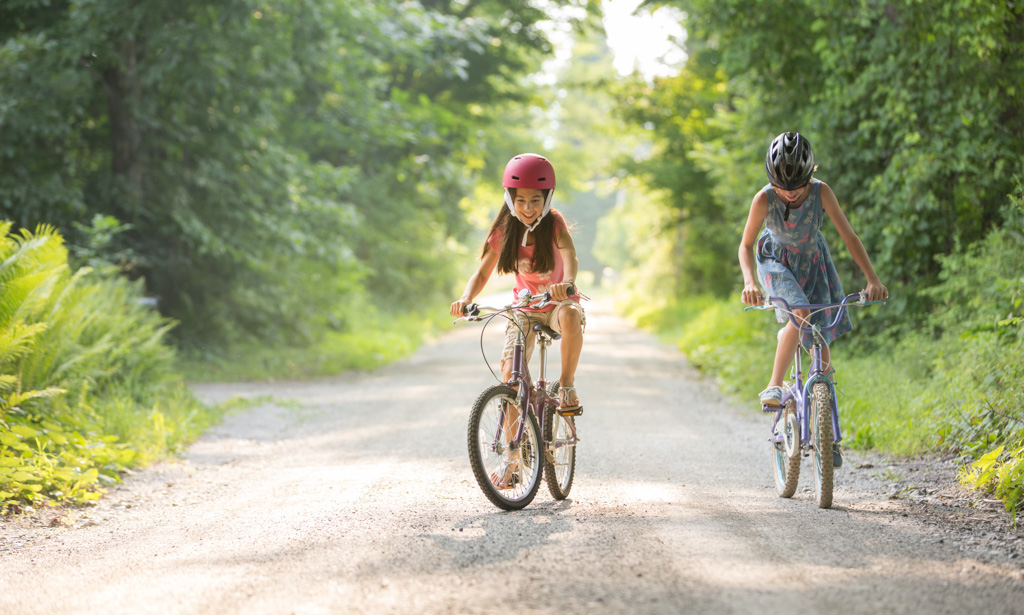One aspect of a student’s home education that may be overlooked is physical fitness. At most public schools, a full class is dedicated to physical education every day (or at least a few days a week). Whether it’s dodgeball, square dancing, rope-climbing, or kickball, parents know their children are getting at least 45 minutes of exercise and activity each day.
With homeschooling, it’s easy to go about your day and finish up your class routine without your child getting as much vigorous exercise as they need which, according to the World Health Organization, is about 60 minutes a day. If your children are already working up a sweat each day, great! Keep it up! But if your homeschooling “recess” or outdoor activity time consists of reading a book outside or drawing with sidewalk chalk (both great outdoor activities, by the way), it might be time to consider putting together an actual gym/phys ed period for your child. Some states even require it.
What Studies Show
Based on a recent study conducted by Rice University lecturer Laura Kabiri, public school students have significantly more lower-abdominal strength and cardiorespiratory fitness levels than homeschooled students. In this study, conducted with two sets of students (one public schooled, one homeschooled) ages 12 to 17, the public school students performed curl-ups at a higher rate than homeschoolers. Public school students also completed more push-ups on average than homeschool students. And although the gap in performance wasn’t alarmingly wide, it was enough to show that public school students met the standard state requirements while homeschoolers did not. The conclusion of this particular study is that “homeschool adolescents showed significant deficits in health-related fitness that could negatively impact both current and future health.”
Explaining the Numbers
As mentioned above, public school students have a built-in period of activity and exercise every day at school. Along with that, kids in public schools walk a lot during the course of a day–to and from class, sometimes even to and from school. In addition, and this may be surprising, carrying backpacks throughout the school day may be contributing to stronger cores and abdominal muscles for public school students. In the same study by Ms. Kabiri, she notes, “This is actually a hot topic in pediatric health and wellness, and I don’t want anyone to think we are encouraging students to carry heavy loads in their backpacks.”
She goes on to say, “we all know that carrying heavy backpacks can lead to musculoskeletal problems. In fact, the American Chiropractic Association recommends a backpack weigh no more than 5-10% of a student’s body weight. However, we are hypothesizing that heavy backpack use (up to 25% of a student’s body weight) among public schoolers could be one explanation for the difference in core strength seen in our study.” Overall, Ms. Kabiri suggests that health care professionals need to improve communication with the homeschool community in order to instruct proper exercise.
What You Can Do
- Sign your student up for a sport. There are literally dozens of options available in most communities.
- A jog or bike ride around the neighborhood. Or even a walk. If it’s a nice day, get your child outside for an hour for some physical activity.
- Take the occasional trip to a local trampoline park, rock climbing wall, batting cage, roller (or ice) skating rink, gym, or bowling alley. When the weather isn’t ideal (or even if it is), these are fun, inexpensive ways to change things up a bit.
- Exercise videos or video games. If you have an older gaming system, like a Nintendo Wii or Xbox Kinect, your kids can definitely get some solid physical activity out of those games. Or even a dancing game for newer consoles. And there are always the classic workout videos that provide everything from beginner to grueling exercise routines.
- Yard work. Mowing the lawn on a warm day is a pretty good workout. Plus, it gives you a break!
Establishing a consistent physical education routine during your homeschool day shouldn’t be too difficult. After all, most kids enjoy getting outside or partaking in some type of physical activity. For those who aren’t outdoor enthusiasts, take advantage of video games that emphasize physical activity, and make the occasional visit to some of the indoor facilities in your area–however they may find exercise enjoyable–because it’s so important for kids and adolescents to get into good nutrition and fitness habits.
How do you keep your kids physically active? Share in the comments below!







